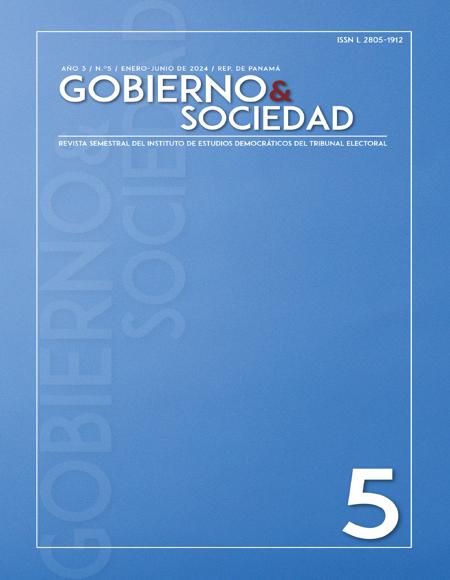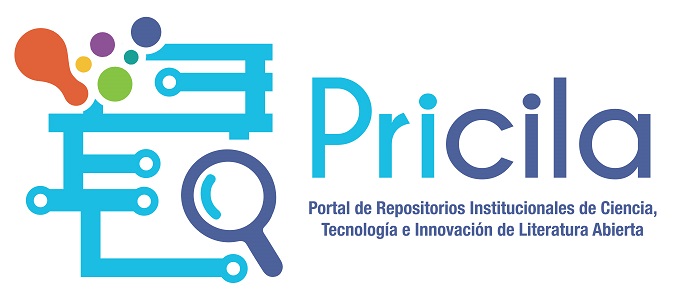¿Transición energética o transición extractivista para Panamá?
Energy transition or extractivism transition to Panama?
##plugins.themes.bootstrap3.article.main##
De conformidad con lo establecido en los artículos 257 y 290 de la Constitución Política de la República de Panamá y la situación minera del país con respecto a la demanda global, es necesario analizar las actuales intenciones del sector minero dentro de las proyectadas negociaciones con el Gobierno entrante. La creciente necesidad de infraestructuras renovables como paneles solares, turbinas eólicas y energía hidroeléctrica, sumado al transporte mediante vehículos eléctricos y sus baterías, requieren el uso de minerales y metales, que se extraen predominantemente del subsuelo de países en vía de desarrollo de África, Asia y América Latina, debido a su posesión concentrada de estaño, oro, cobalto, níquel, cobre y platino.
Descargas
Datos de publicación
Perfil evaluadores/as N/D
Declaraciones de autoría
Indexado en
- Sociedad académica
- Instituto de Estudios Democráticos
- Editorial
- Instituto de Estudios Democráticos
##plugins.themes.bootstrap3.article.details##
Anstee, S., Ekstrom, J., Pilgrim, J., Rabenantoandro, J., Ramanamanjato, J., Randriatafika, F., Temple, H., & Vincelette, M. (2012). Forecasting the path towards a net positive impact on biodiversity for Rio Tinto QMM. https://www.semanticscholar.org/paper/Forecasting-the-path-towards-a-net-positive-impact-Anstee-Ekstrom/63e53bfb81dabfa195d2823d6e48421e38b2e2b6
Asnani, N. (2022). Effectiveness of Sustainability Disclosures in the Mining and Metals Sector –a Critical Analysis. https://dash.harvard.edu/handle/1/37373374
Aung, T. S., Shengji, L., & Condon, S. (2019). Evaluation of the environmental impact assessment (EIA) of Chinese EIA in Myanmar: Myitsone Dam, the Lappadaung Copper Mine and the Sino-Myanmar oil and gas pipelines. Impact Assessment and Project Appraisal, 37(1), 71–85. https://doi.org/10.1080/14615517.2018.1529948 DOI: https://doi.org/10.1080/14615517.2018.1529948
Braun, A. B., Trentin, A. W. da S., Visentin, C., & Thomé, A. (2020). Relevance of sustainable remediation to contaminated sites manage in developed and developing countries: Case of Brazil. Land Use Policy, 94, 104533. https://doi.org/10.1016/j.landusepol.2020.104533 DOI: https://doi.org/10.1016/j.landusepol.2020.104533
Castillo, S., de la Rosa, J. D., Sánchez de la Campa, A. M., González-Castanedo, Y., Fernández-Caliani, J. C., Gonzalez, I., & Romero, A. (2013). Contribution of mine wastes to atmospheric metal deposition in the surrounding area of an abandoned heavily polluted mining district (Rio Tinto mines, Spain). Science of The Total Environment, 449, 363–372. https://doi.org/10.1016/j.scitotenv.2013.01.076 DOI: https://doi.org/10.1016/j.scitotenv.2013.01.076
Chan, D. S. W., & Pun, N. (2020). Renegotiating Belt and Road cooperation: Social resistance in a Sino–Myanmar copper mine. Third World Quarterly, 41(12), 2109–2129. https://doi.org/10.1080/01436597.2020.1807928 DOI: https://doi.org/10.1080/01436597.2020.1807928
Craig, M. (2015). Year Two of the Long-term Assessment of Mining Impacts.
De Chassy, A. B., Chehab, N., & Cipollitti, R. (2016). Year Three of the Long Term Mining Monitoring Project.
De Wet, & Sidu. (2013). Reliable Mine Water Technology. Mine Water and the Environment, 29(2), 85–91. https://doi.org/10.1007/s10230-010-0111-7 DOI: https://doi.org/10.1007/s10230-010-0111-7
El Bizri, H. R., Macedo, J. C. B., Paglia, A. P., & Morcatty, T. Q. (2016). Mining undermining Brazil’s environment. Science, 353(6296), 228–228. https://doi.org/10.1126/science.aag1111 DOI: https://doi.org/10.1126/science.aag1111
Freitas, C. M., & da Silva, M. A. (2020). Work accidents which become disasters: Mine tailing dam failures in Brazil. Revista Brasileira de Medicina Do Trabalho, 17(1), 21–29. https://doi.org/10.5327/Z1679443520190405 DOI: https://doi.org/10.5327/Z1679443520190405
Guerra, M. B. B., Teaney, B. T., Mount, B. J., Asunskis, D. J., Jordan, B. T., Barker, R. J., Santos, E. E., & Schaefer, C. E. G. R. (2017). Post-catastrophe Analysis of the Fundão Tailings Dam Failure in the Doce River System, Southeast Brazil: Potentially Toxic Elements in Affected Soils. Water, Air, & Soil Pollution, 228(7), 252. https://doi.org/10.1007/s11270-017-3430-5 DOI: https://doi.org/10.1007/s11270-017-3430-5
Hilson, G., & Haselip, J. (2004). The environmental and socioeconomic performance of multinational mining companies in the developing world. Minerals & Energy, 19(3), 25–47. DOI: https://doi.org/10.1080/14041040410027318
Kim, T. Y., Gould, T., Bennet, S., Briens, F., Dasgupta, A., Gonzales, P., ... & Schulz, R. (2022). The role of critical minerals in clean energy transitions. International Energy Agency: Washington, DC, USA, 70-71.
Lawler, A. (2010). Copper Mine Threatens Ancient Monastery in Afghanistan. Science, 329(5991), 496–497. https://doi.org/10.1126/science.329.5991.496 DOI: https://doi.org/10.1126/science.329.5991.496
McKay, T. J. M., & Milaras, M. (2017). Public lies, private looting and the forced closure of Grootvlei Gold Mine, South Africa. The Journal for Transdisciplinary Research in Southern Africa, 13(1), Article 1. https://doi.org/10.4102/td.v13i1.347 DOI: https://doi.org/10.4102/td.v13i1.347
Meyer, N. F., Moreno, R., Reyna-Hurtado, R., Signer, J., & Balkenhol, N. (2020). Towards the restoration of the Mesoamerican Biological Corridor for large mammals in Panama: comparing multi-species occupancy to movement models. Movement ecology, 8, 1-14. DOI: https://doi.org/10.1186/s40462-019-0186-0
Milaras, M., McKay, T., & Ahmed, F. (2014, October 1). Mine closure in South Africa: A survey of current professional thinking and practice. https://doi.org/10.13140/RG.2.1.3599.3765
Naryono, E. (2023). Nickel Mine Exploitation In Indonesia, Between A Blessing And A Disaster Of Environmental Damage. https://doi.org/10.31219/osf.io/y58qe DOI: https://doi.org/10.31219/osf.io/y58qe
Nursaputra, M., Larekeng, S. H., Nasri, N., Hamzah, A. S., Mustari, A. S., Arif, A. R., Ambodo, A. P., Lawang, Y., & Ardiansyah, A. (2021). Pemanfaatan Penginderaan Jauh Dalam Penilaian Keberhasilan Reklamasi di Lahan Pasca Tambang PT. Vale Indonesia. Jurnal Pengelolaan Sumberdaya Alam Dan Lingkungan (Journal of Natural Resources and Environmental Management), 11(1), 39–48. https://doi.org/10.29244/jpsl.11.1.39-48 DOI: https://doi.org/10.29244/jpsl.11.1.39-48
Quinn, C., & Pouliot, J. (2014). Long-term Monitoring Impact Assessment of Mining Activity in Panama. McGill University.
Radley, B., & Geenen, S. (2021). Struggles over value: Corporate–state suppression of locally led mining mechanisation in the Democratic Republic of the Congo. Review of African Political Economy, 48(168). https://doi.org/10.1080/03056244.2020.1865902 DOI: https://doi.org/10.1080/03056244.2020.1865902
Rickard, S. (2020). Gender, agency and decision making in community engagement: Reflections from Afghanistan’s Mes Aynak Mine. The Extractive Industries and Society, 7(2), 435–445. https://doi.org/10.1016/j.exis.2019.11.001 DOI: https://doi.org/10.1016/j.exis.2019.11.001
Simmonds, J., Gómez, J. A., & Ledezma, A. (2018). Knowledge inference from a small water quality dataset with multivariate statistics and data-mining. In Advances in Information and Communication Technologies for Adapting Agriculture to Climate Change: Proceedings of the International Conference of ICT for Adapting Agriculture to Climate Change (AACC'17), November 22-24, 2017, Popayán, Colombia (pp. 1-15). Springer International Publishing. DOI: https://doi.org/10.1007/978-3-319-70187-5_1
Simmonds, J., Gómez, J. A., & Ledezma, A. (2018). Statistical and Data Mining Techniques for Understanding Water Quality Profiles in a Mining-Affected River Basin. In International Journal of Agricultural and Environmental Information Systems. Volume 9, Issue 2 (pp 1-19). April-June 2018 DOI: https://doi.org/10.4018/IJAEIS.2018040101
Song, Y., Hou, D., Zhang, J., O’Connor, D., Li, G., Gu, Q., Li, S., & Liu, P. (2018). Environmental and socio-economic sustainability appraisal of contaminated land remediation strategies: A case study at a mega-site in China. Science of The Total Environment, 610–611, 391–401. https://doi.org/10.1016/j.scitotenv.2017.08.016 DOI: https://doi.org/10.1016/j.scitotenv.2017.08.016
Strand, R., Crippen, K., Ltd, B., & Usher, B. (2010). Integrated water balance and water quality modelling for mine closure planning at Antamina. https://www.semanticscholar.org/paper/Integrated-water-balance-and-water-quality-for-mine-Strand-Crippen/69f349ac7cfddb4741679c28b85c383cac87c0c4
UNEP. (2024, February 19). What are energy transition minerals and how can they unlock the clean energy age? UNEP. http://www.unep.org/news-and-stories/story/what-are-energy-transition-minerals-and-how-can-they-unlock-clean-energy-age
UNFCCC. (2023). COP28 Agreement Signals “Beginning of the End” of the Fossil Fuel Era | UNFCCC. https://unfccc.int/news/cop28-agreement-signals-beginning-of-the-end-of-the-fossil-fuel-era
Wellhofer. (1988). Models of Core and Periphery Dynamics. https://doi.org/10.1177/0010414088021002005 DOI: https://doi.org/10.1177/0010414088021002005




















